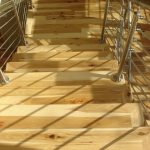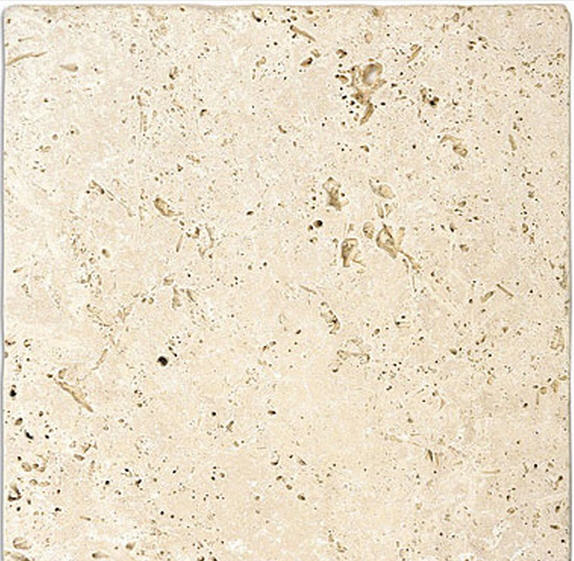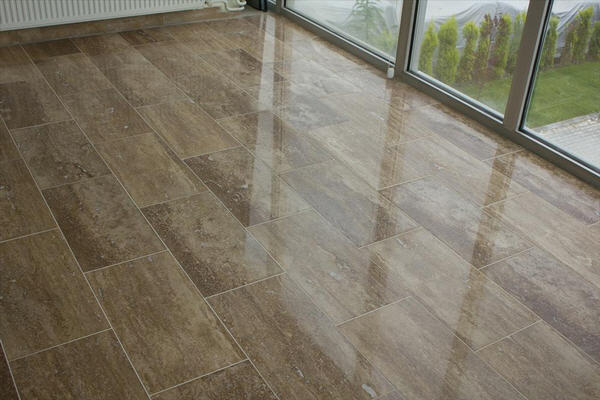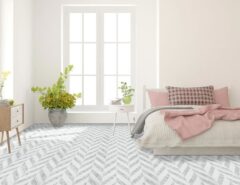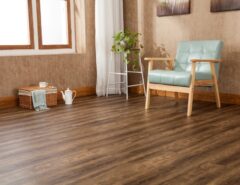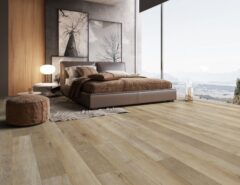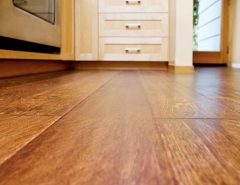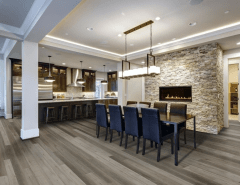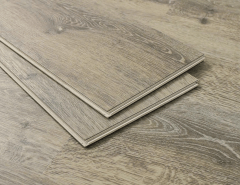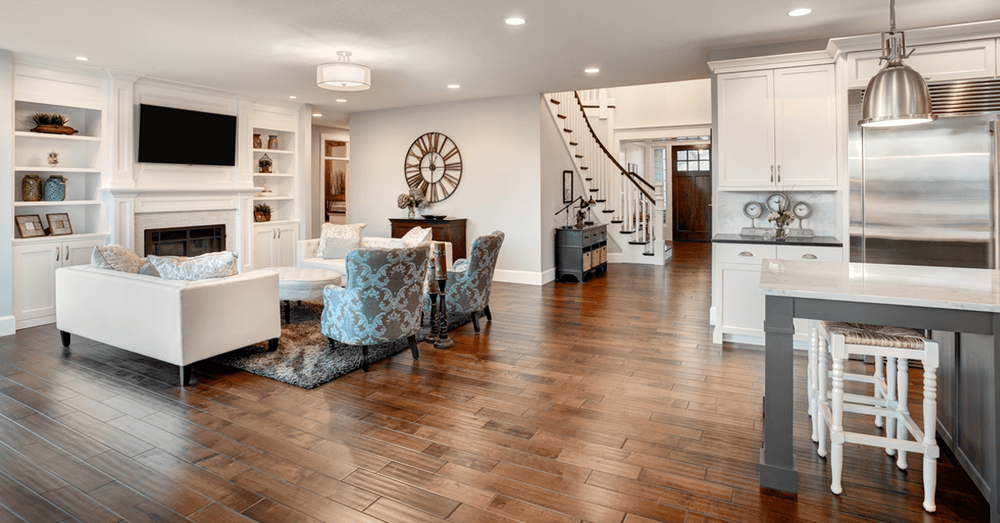Much like ceramic tile, humanity has been building homes, cities, and even empires using stone tile. And one of the many go-to varieties of stone down through the ages has been travertine.
Travertine, as many of you know, is a close cousin of marble, and of limestone. Like those other higher profile types of stone tile, travertine is formed underground over a long period of time, with subterranean water systems playing a pretty large part in how it forms.
The colors of travertine depend on where those water systems were, and what the mineral make-up was in the region. Travertine can be gold, to beige, to silver, separated roughly by color when the stone is quarried, yet still featuring visually dynamic color variation in every batch of tile.

Travertine as a material consists of sundry materials that make up its body, collected by those water systems, and characterized in its natural and unprocessed form as a porus stone. The pores are a selling point for many, and a distraction for some others.
Yet, one thing that travertine offers is versatility, particularly in the form of tile for floors, pavers, and for walls and backsplashes.
Natural travertine tile
If you want to see those pores, because of that rough-hewn natural look that evokes ancient imperial charm, then boom, there you have it. Natural travertine exhibits this look, linking it to its origins, which a lot of people find to be important, with a kind of historical link to the past.

Honed and Filled travertine tile
Other people find that look to be unrefined, and are looking for something a bit more tailored. Travertine is there again. “Honed and filled” or “filled and polished” travertine is widely available.
The “filled” part is a process of literally filling the pores of natural travertine with a textured cement-like grout while preserving the natural color variation and patterning in the tile. The honing, or polishing part is about smoothing the surfaces of each tile, making it perfect for a pristine entrance way, or even an outdoor living space.

Tumbled, brushed, chisled travertine tile
Some people want to go in the completely opposite direction of that tailored look, with a look of a stone tile surface that looks as though Julius Caesar and Cleopatra might have had cocktails in the space where the travertine tile has been installed. No problem there, either.
A process called “tumbling” takes care of that, with “tumbled” travertine tile being the product of being placed into a machine and literally tumbled with fragments of stone to give it that aged, chipped-edge look that makes it look seasoned and ancient, although no less durable.
The same goes for “chisled” and “brushed” travertine, where the weathering process is done by hand at the factory, with a chisel (natch!) or a wire-brush.
The way travertine tile is processed allows it to match nearly every expectation of the look you’re going for in pretty much any space you’re looking to incorporate a natural stone surface.
Shape, layout, and dimension of travertine tile
To fill out this idea of versatility even more, there are a number of spatial considerations for travertine that provide you with a lot of design options in terms of flow and effect. Rectangular travertine tile, square tile, mosiac travertine with a mesh backing, french pattern tile layout, brick layouts, and many other options are open to you.
Some people like smaller travertine tiles to get a tighter, more compact look. Others like larger tiles for a more spacious effect. Either way, a travertine surface offers visual variation, whichever aesthetic you happen to be thinking about.

Travertine tile – outdoor and indoor living spaces
Another historic connection that civilization has with travertine is that there has been no division as to where you install it. This works out extremely well for the 21st century homeowner who is interested in blurring the lines between outdoor living spaces and interiors. Travertine helps get you there, for use as patios, paths, and pool surrounds leading into interior spaces that we spend most of our time in.
For outdoor installations in particular, your climate will be the first point of discussion to have with your chosen travertine tile vendor. It’s a conversation to have with your installer if you’re not installing it yourself. But, travertine holds the potential as a unifying stylistic surface between interior spaces, and outdoor ones.

As ancient a building material as it is, you can see that travertine tile can be a part of a 21st century, modern design, like this classic minimalist space. It also shows the potential to unite indoor and outdoor spaces as well.
Rooms to transform with travertine tile
Much like in the ancient world, the use of stone surfaces all over the house is becoming more and more common. We’ve moved beyond the hallway, and the foyer, the bathroom, and into the kitchen, the living rooms, studies, and even bedroom areas.
Once again, a lot of this will depend upon your climate as much as it will with the style you’re trying to capture. It’s something to discuss with your chosen vendor. But, if these elements are in place, travertine remains to be an option for all kinds of rooms in your home.
Floors and walls and travertine tile
Travertine tile can exist in three dimensions, which proves its versatility even further. As we’ve seen, travertine makes for high performing flooring. But, it’s also a unique surface for applications like shower and bath backsplashes, either using large tile, or mosaics. With the mosaics, you’re getting another design dimension that adds value to a space, and that’s texture.

Travertine tile as wall tile. Some offer color variation and contrast. Others, like this example, offer a textural, even tactile dimension.
Having a surface on walls and floors, with perhaps a dash of contrast between one of the many types of stone tile like this and another, helps you create important contrast in a given space. The irony of good design is that contrast often leads to its own kind of unity, and (dare we use the word) harmony, too.
New travertine tile options to consider
BuildDirect has been working with travertine manufacturers for many years, and we’ve learned an awful lot about its potential as a key surface in a modern home. Most recently, we’ve launched a few new options for travertine tile. These include a new line of filled and polished travertine tile in rectangular dimensions, much like the way a wood floor might appear. If you’re looking for a reflective surface that helps you to spread a bit more natural light in a space, this is well worth checking out.
Another new launch is a collection of mesh-backed travertine mosaic tile. As mentioned above, this kind of travertine can be used as flooring. But, it’s popularly used as wall tile, and for patterning and texture as a contrast to other decor elements.
Travertine tile, past, present, and future
Even with these two kinds of travertine tile, the big takeaway is versality, with a number of effects to be gained no matter where you install it. Use of travertine like this is a real link to the past, seeing that travertine was one of the key materials in building empires for thousands of years. But, it’s also a modern, 21st century element that helps you to create viral interior continuity.
It puts the “tile” in versatile!
Cheers,
Rob.





